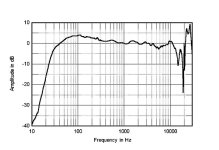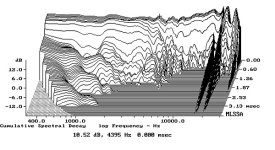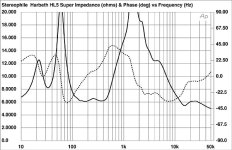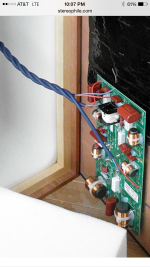For the 3rd time now, cavity resonances in soft dome tweeters DO NOT show in impedance traces. It should be pretty obvious for the reasons I spelled out before why that's the case. Maybe if you 10x zoomed into just that area, you might see a hint of a wiggle. Instead of knee jerk defending your position, please take a step back and reevaluate.
Also the FR anomaly and correlating CSD energy storage of the tweeter I posted are essentially identical to the Sabrina tweeter, the graphs I posted couldn't be a more perfect analogy. Yet just as I predicted, neither shows a blip in impedance. Also just as predicted, there is odd order distortion spikes propagating downward ... and further as I predicted, those spikes are significantly damped because of the nature of silk dome tweeters. Having seen that type of behavior first hand many times, I know that it's very likely it could be eliminated with just a small wad of damping/stuffing inserted into the pole or rear chamber.
And no, you cannot 'tame' a high Q resonance like that in the crossover. #1 it's too narrow to target, #2 it's a suckout and not a peak, and #3 passive components cannot change the geometry inside the pole/chamber to prevent standing wave formation.








